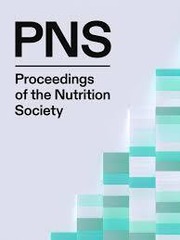Food selection and ingestion is affected by a multitude of sensory, economic, genetic, psychological and biological factors( Reference Nestle, Wing, Birch, DiSogra, Drewnowski and Middleton 1 – Reference Drewnowski 3 ). Of these, taste is paramount, and humans have an innate preference for sweetness and aversion for bitterness; these are linked to vegetable acceptance( Reference Dinehart, Hayes, Bartoshuk, Lanier and Duffy 2 ). Sufficient vegetable intake offers many health benefits( 4 ), however many populations fail to meet recommended guidelines( 4 – 6 ). With the rise in diet-related disease( 4 ), there is a need to better understand barriers to liking and intake. Here, we investigated predictors of vegetable liking in an American population, with a focus on taste and textural characteristics.
Participants (n = 92) aged 18–40 years took part in this laboratory-based study. They were served broccoli, carrots and kale prepared in three ways (boiled, blended, raw). ‘Overall’ and ‘texture’ liking for each sample was rated on a general Labelled Magnitude Scale. Other ratings for a range of taste and textural properties were also obtained, and vegetable intake was measured. Statistical analyses were conducted using SPSS v20. Liking and self-reported intake are typically correlated; here, we found acute intake (in grams) was also correlated in with liking (Fig. 1). Generally, more bitterness decreased vegetable liking, whilst more sweetness increased liking (p ≤ 0·001). Fig. 2 depicts the mean sweetness and bitterness intensity for each vegetable group alongside its’ mean overall liking score. Additionally, preparation method and vegetable type both had a significant influence on overall liking (p < 0·001) (Fig. 3). Multiple linear regression analysis showed that over 60 % of the variation in overall liking scores could be attributed to the range of sensory taste and texture properties examined here (R2 Adj = 0·61, p ≤ 0·001).

Fig. 1. Correlation between vegetable intake and linking.

Fig. 2. Mean bitterness, sweetness overall linking for each vegetable.

Fig. 3. The mean overall linking score for three vegetables.
Eating behaviours are complex, and vegetables intake is influenced by many factors. However, the present analyses demonstrate that taste and texture characteristics may explain considerable variation in vegetable liking, in a controlled setting. This information can be used to inform the design of future interventions, to actively increase vegetable consumption by providing access to vegetables that are prepared in a sensorially appealing manner, in order to promote liking and intake.





